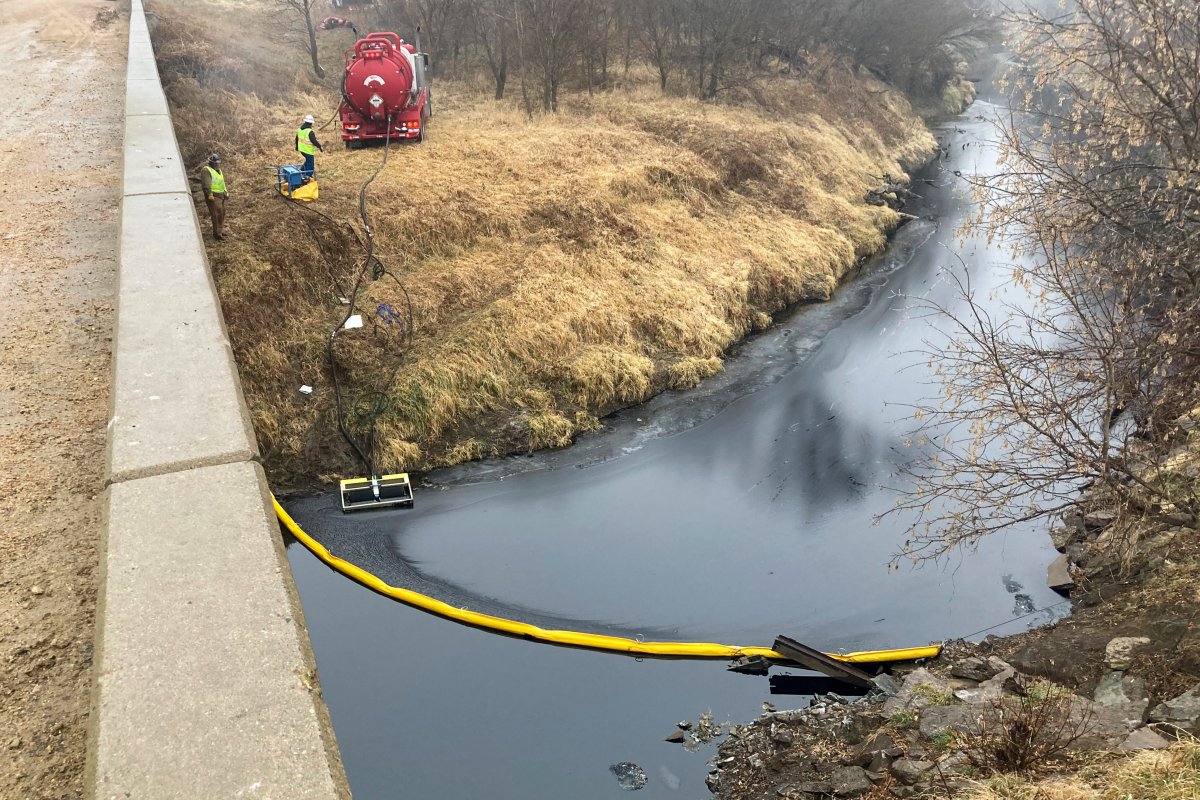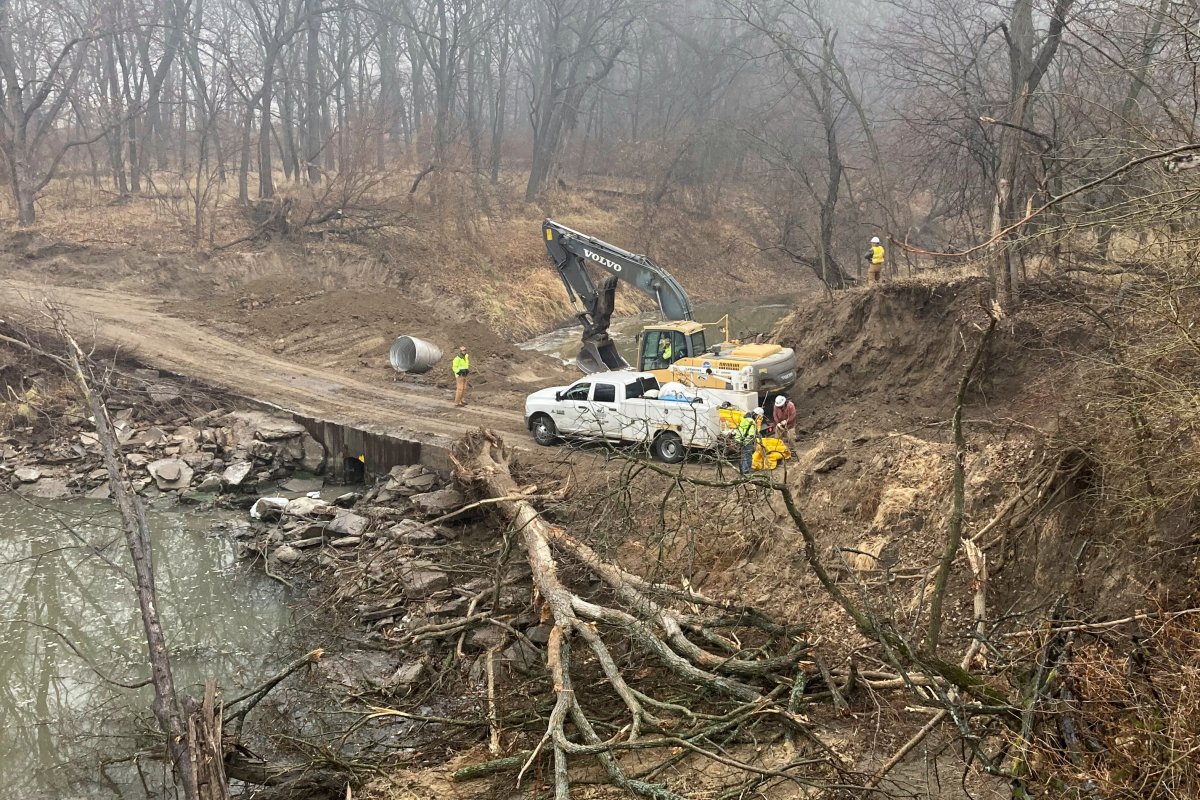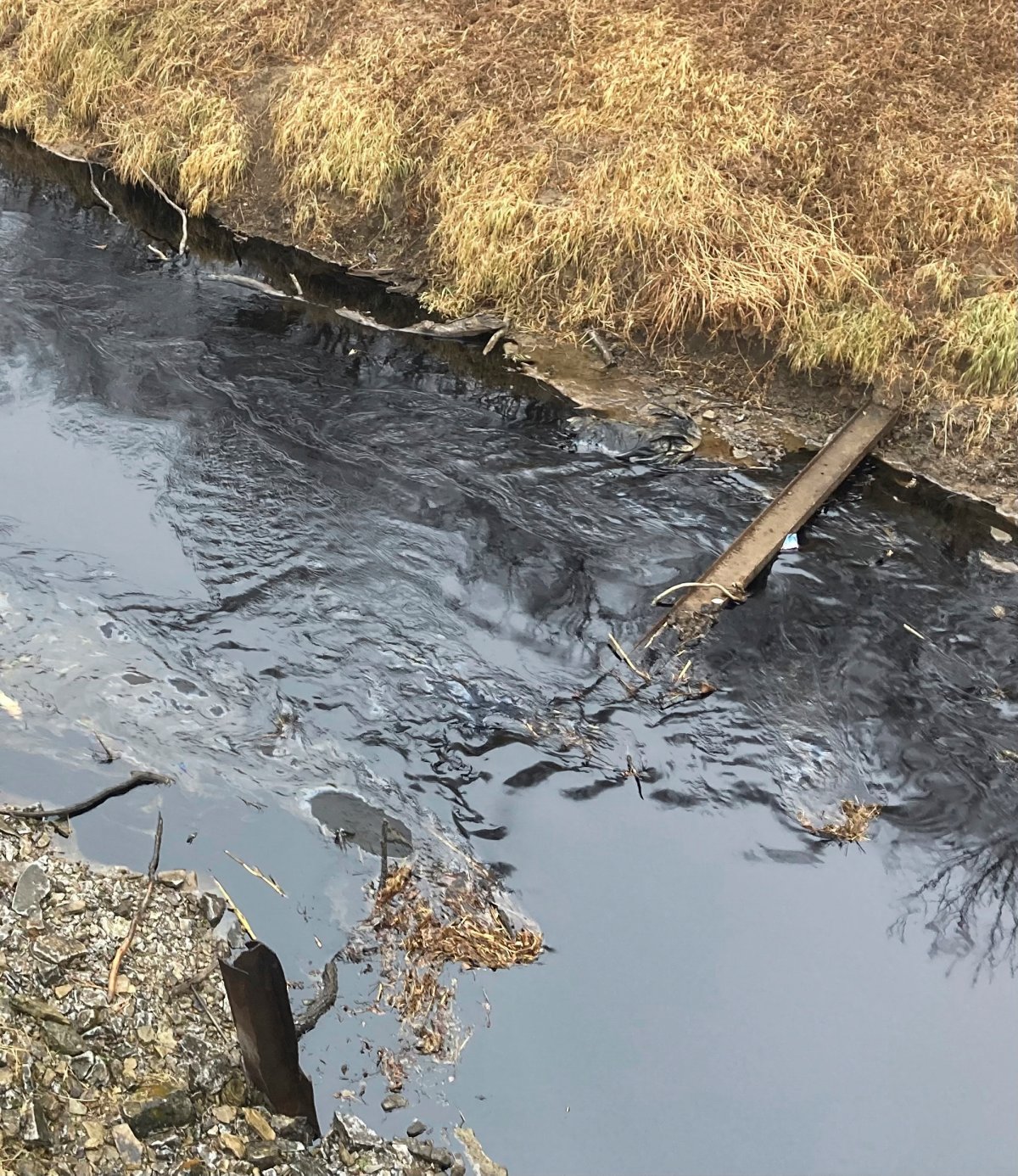The effort to remove oil from the largest crude spill in the United States in nearly a decade will extend into next week, the U.S. Environmental Protection Agency said on Friday, making it likely that the Keystone pipeline shutdown will last for several more days.

TC Energy shut the largest oil pipeline to the United States from Canada on Wednesday after it leaked 14,000 barrels of oil into a Kansas creek. It said on Friday it is still determining when it will be able to return the line to service.
The outage on the Keystone, which carries 622,000 barrels of Canadian crude per day (bpd) to various parts of the United States, could affect inventories at the key Cushing, Oklahoma, storage hub and cut crude supplies to two oil refining centers, analysts said. Crews in Kansas continued clean-up efforts on Friday from the breach, the cause of which remained unknown.
“We’re beginning to get a better sense of the clean up efforts that will need to be undertaken in the longer-term,” said Kellen Ashford, spokesperson for the EPA Region 7, which includes Kansas.
TC Energy aims to restart on Saturday a pipeline segment that sends oil to Illinois, and another portion that brings oil to Cushing on Dec. 20, Bloomberg News reported, citing sources. Reuters has not verified those details.
This is the third spill of several thousand barrels of crude on the pipeline since it first opened in 2010. A previous Keystone spill had caused the pipeline to remain shut for about two weeks.
TC Energy remained on site with around 100 workers leading the clean-up and containment efforts, and the EPA was providing oversight and monitoring, Ashford said. TC is responsible for determining the cause of the leak.
A corrective action order from the U.S. Pipeline and Hazardous Materials Administration (PHMSA) to TC on Thursday said the company shut the pipeline down seven minutes after receiving a leak detection alarm. The affected segment, 36 inches (91 cm) in diameter, was Keystone’s Phase 2 extension to Cushing built in 2011.
Washington County, a rural area of about 5,500 people, is about 200 miles (320 km) northwest of Kansas City.
The oil spill has not threatened the local water supply or forced local residents to evacuate, Washington County Emergency Management Coordinator Randy Hubbard told Reuters. Workers quickly set up a containment area to restrict oil that had spilled into a creek from flowing downstream.
“There is no human consumption drinking water that would come out of this,” Hubbard said.
Livestock producers in the area have been notified and have taken their own corrective measure to protect their animals, he added.

The EPA is the main federal agency that oversees inland oil spills. If the EPA finds TC Energy liable for the spill, the company would be responsible for the cost of cleanup and repairing any harm to the environment, as well as potential civil and criminal penalties.
Kyle Bauer, owner and general manager of agricultural news radio station KFRM, went to see the clean-up efforts for himself after hearing how close the spill site was — just about 60 kilometres from him. He was impressed with how quickly the resources were rallied, especially at night and in inclement winter weather.
“EPA’s emergency truck was there supervising. There was remediation crews out of Missouri – which was about a three-hour drive – that were there vacuuming crude off the top of Mill Creek.
“The county of Washington County’s road crew was hauling dirt to make a dam on Mill Creek,” Bauer said.
“It was amazing to me to see how much mobilization was able to happen that fast.”
He said much of the radio station’s audience are farmers who have mineral rights and are leaseholders for oil and gas extraction. He added pipeline companies that have a long history in Kansas and nearby Oklahoma.
“There’s tens of thousands of miles of pipeline under Kansas, running in almost every direction, carrying everything from processed fuels to crude oil to natural gas. And so pipeline ruptures happen from time to time,” Bauer said.
“It’s terribly bad luck that it happened close to Mill Creek. Had it happened out in the middle of a farm field, it would have been very easily cleaned up. But I understood it did happen in a farm field, but on a slope, and it ran into Mill Creek fairly quickly.”
Pipeline operators are typically held accountable for breaches by the EPA through the Clean Water Act (CWA) and the related Oil Pollution Act, among others, according to Zygmunt Plater, an environmental law professor at Boston College Law School.
Those federal acts restrict the discharge of pollutants such as oil into waterways and hold pipeline operators responsible for the costs associated with containment, cleanup and damages from spills.

Crude bottleneck
A lengthy shutdown of the pipeline could also lead to Canadian crude getting bottlenecked in Alberta, and drive prices at the Hardisty storage hub lower, although price reaction on Friday was muted.
Western Canada Select (WCS), the benchmark Canadian heavy grade, for December delivery last traded at a discount of $27.70 per barrel to the U.S crude futures benchmark, according to a Calgary-based broker. On Thursday, December WCS traded as low as $33.50 under U.S. crude, before settling at around a $28.45 discount.
PHMSA has to approve the restart of the line. Even once the pipeline starts operating again, the affected area will have to flow at reduced rates pending PHMSA approval.
“The real impact could come if Keystone faces any pressure restrictions from PHMSA, even after the pipeline is allowed to resume operations,” said Ryan Saxton, head of oil data at Wood Mackenzie.
–with files from Adam Toy, Global News
- Invasive strep: ‘Don’t wait’ to seek care, N.S. woman warns on long road to recovery
- Ontario First Nation declares state of emergency amid skyrocketing benzene levels
- Do Canadians have an appetite for electric vehicles? Experts are divided
- Nearly 200 fossil fuel, chemical lobbyists to join plastic treaty talks in Ottawa








Comments